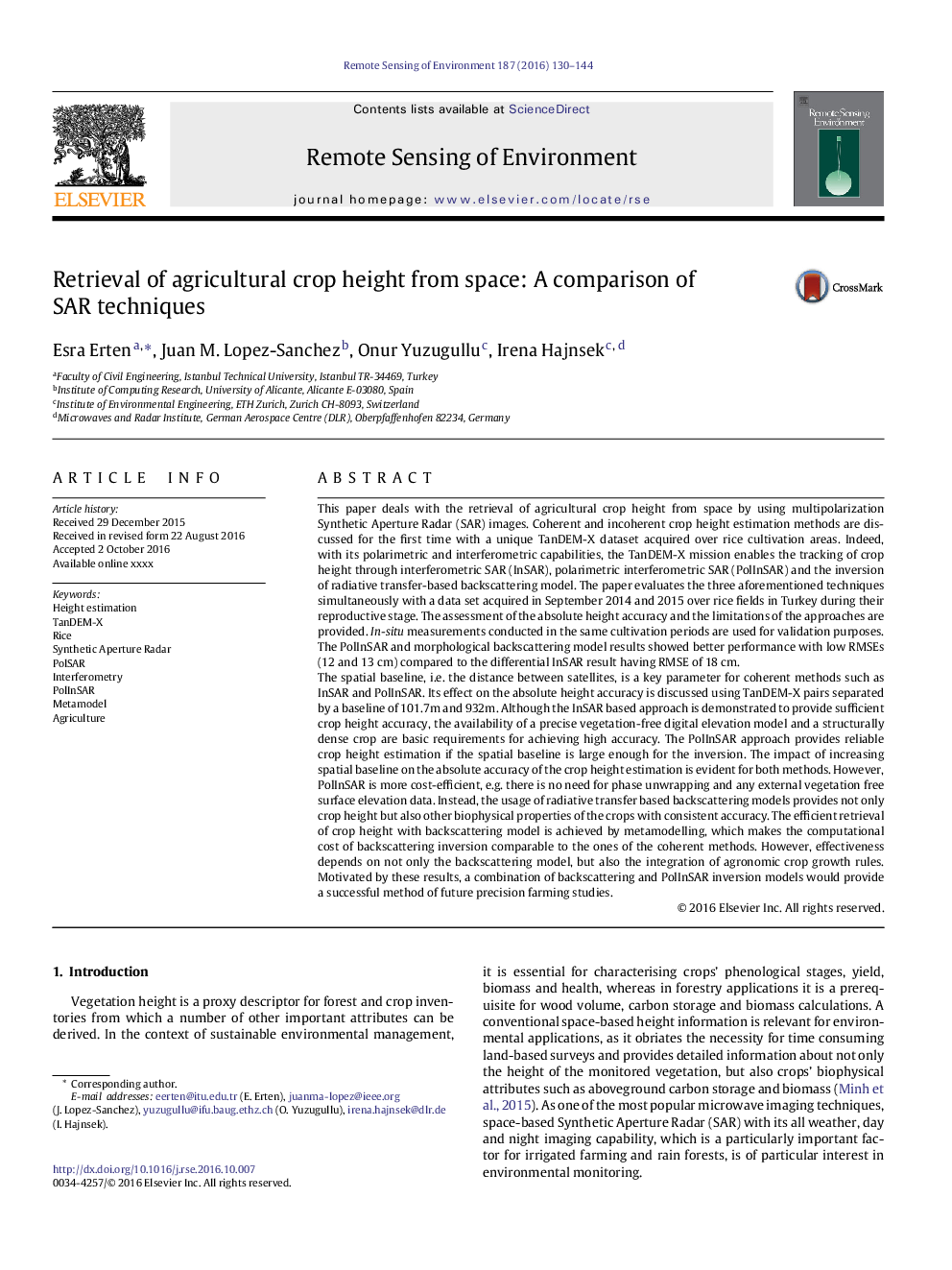| Article ID | Journal | Published Year | Pages | File Type |
|---|---|---|---|---|
| 6344822 | Remote Sensing of Environment | 2016 | 15 Pages |
Abstract
The spatial baseline, i.e. the distance between satellites, is a key parameter for coherent methods such as InSAR and PolInSAR. Its effect on the absolute height accuracy is discussed using TanDEM-X pairs separated by a baseline of 101.7m and 932m. Although the InSAR based approach is demonstrated to provide sufficient crop height accuracy, the availability of a precise vegetation-free digital elevation model and a structurally dense crop are basic requirements for achieving high accuracy. The PolInSAR approach provides reliable crop height estimation if the spatial baseline is large enough for the inversion. The impact of increasing spatial baseline on the absolute accuracy of the crop height estimation is evident for both methods. However, PolInSAR is more cost-efficient, e.g. there is no need for phase unwrapping and any external vegetation free surface elevation data. Instead, the usage of radiative transfer based backscattering models provides not only crop height but also other biophysical properties of the crops with consistent accuracy. The efficient retrieval of crop height with backscattering model is achieved by metamodelling, which makes the computational cost of backscattering inversion comparable to the ones of the coherent methods. However, effectiveness depends on not only the backscattering model, but also the integration of agronomic crop growth rules. Motivated by these results, a combination of backscattering and PolInSAR inversion models would provide a successful method of future precision farming studies.
Keywords
Related Topics
Physical Sciences and Engineering
Earth and Planetary Sciences
Computers in Earth Sciences
Authors
Esra Erten, Juan M. Lopez-Sanchez, Onur Yuzugullu, Irena Hajnsek,
